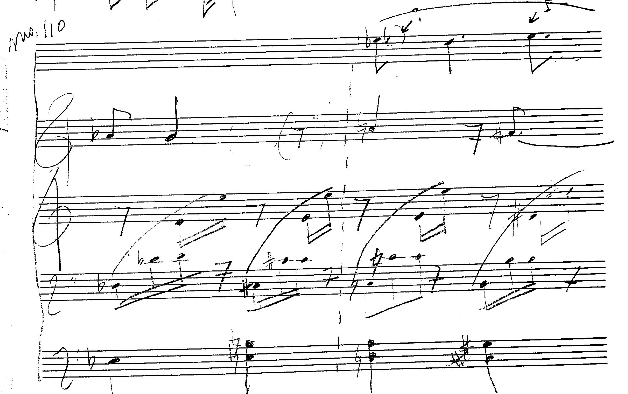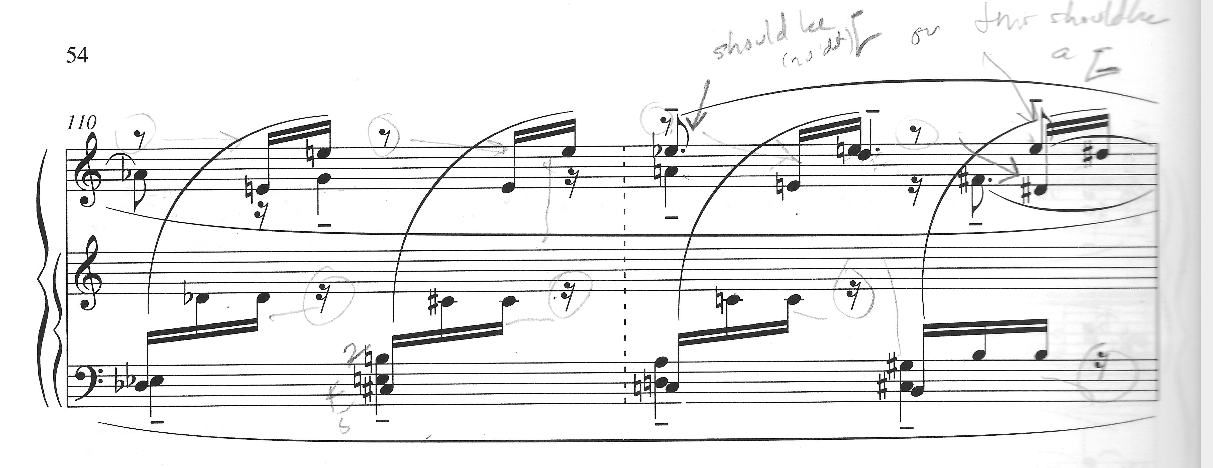
I made a faux pas yesterday. In the Modern Dance class I play for there is an unusual mix of people. This is especially unusual here in Holland Michigan where homogeneity seems to be the order of the day.

One young woman told the class she was raised in Poland before moving to Holland as a young adult (high school?). She spoke without a trace of accent.
Yesterday I was walking past her and realized I was holding a Ligeti piano score. I asked her if she recognized the composer. She said no. I said he was a famous Polish composer.
I have been working on understanding the sixth piano etude of Ligeti which is called “Automne à Varsovie” which is translated to mean “Autumn in Warsaw.” Unfortunately I had assumed that Ligeti was Polish because of this.

Ahem. He’s Hungarian. Oops.

I owe this young woman an apology next time I see her.

I noticed she was intently copying down Ligeti’s name so maybe she will already know I was mistaken.
I was working on Ligeti’s Etude 6 at the piano yesterday. I was diligently beginning with the last two pages as I sometimes do. I worked over the left hand several times, then the right. Except that in ms. 110 I was confused about the notation.
The second half of this measure seemed to have too many beats.
 I don’t know if you can read it, but I have scanned my handwritten score of this measure. I see I have inadvertently made the last note E (with the arrow pointing to it) a dotted eighth instead of an eighth (the way it is written in the score). This would make it even more confusing.
I don’t know if you can read it, but I have scanned my handwritten score of this measure. I see I have inadvertently made the last note E (with the arrow pointing to it) a dotted eighth instead of an eighth (the way it is written in the score). This would make it even more confusing.
Bah.
Usually when I find an anomaly like this, I begin trying to think like the composer was thinking or find his or her logic. I began by analyzing the melody of this piece. Since Ligeti uses the melody elegantly in many rhythmic transformations this didn’t help.
Then I played slowly through the entire piece hoping that when I arrived at ms. 110 the logic of how a performer would interpret the notation would be apparent.
This didn’t work either for me.
Then I googled it. I did find a very interesting doctoral thesis on Ligeti’s piano etude: “György Ligeti’s Piano Études: A Polyrhythmic Study” by Jiwon Baik, Florida State U (link to pdf) But it didn’t mention a typo or weird thing in ms. 110.
I just emailed some musicians I know and to see if someone has a solution or knows about this measure or sees my own error.

Hi,
Did you find out about the ms. 110 already?
I’m not a musician. But I’m listening to this Ligeti’s etude 6 many times per day since three days ago. I like it very much. A musician friend offered me to play it for me if I get the score. Googleing for it I found your post, it’s very nice.
Yes. I did figure this out. After emailing some musician friends we agreed that it is a misnotation and that the D is not a dotted quarter, but rather a dotted eighth.